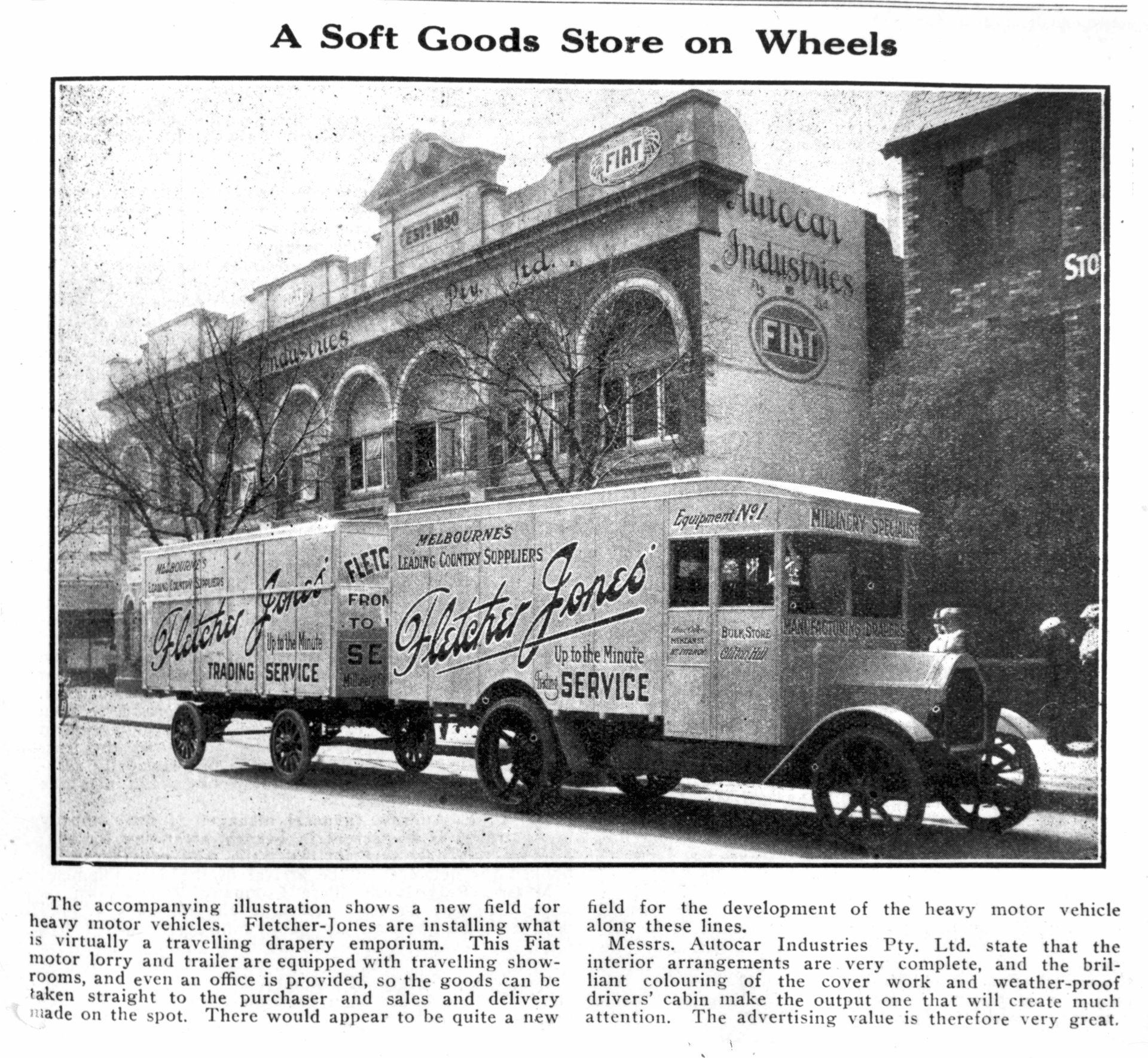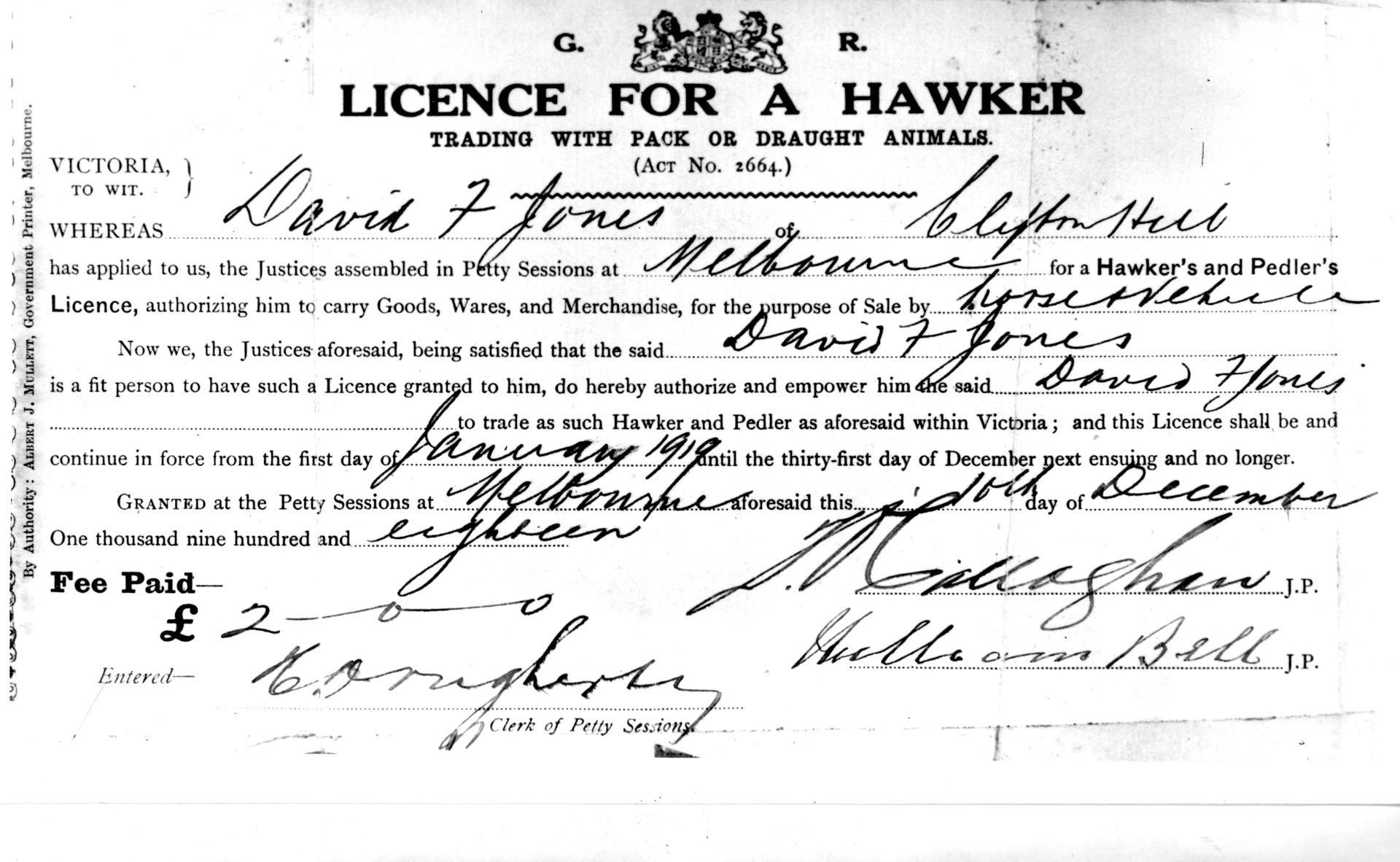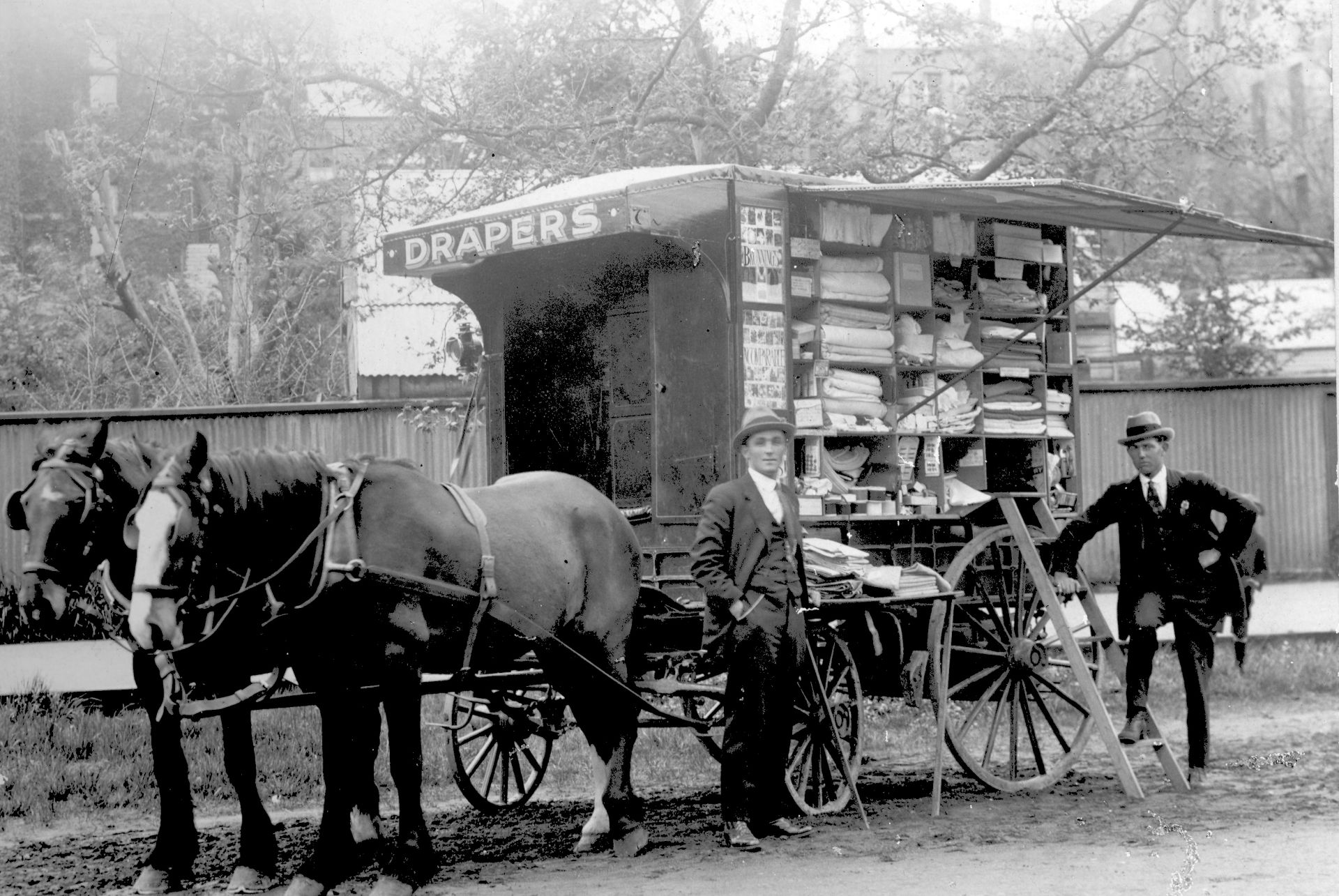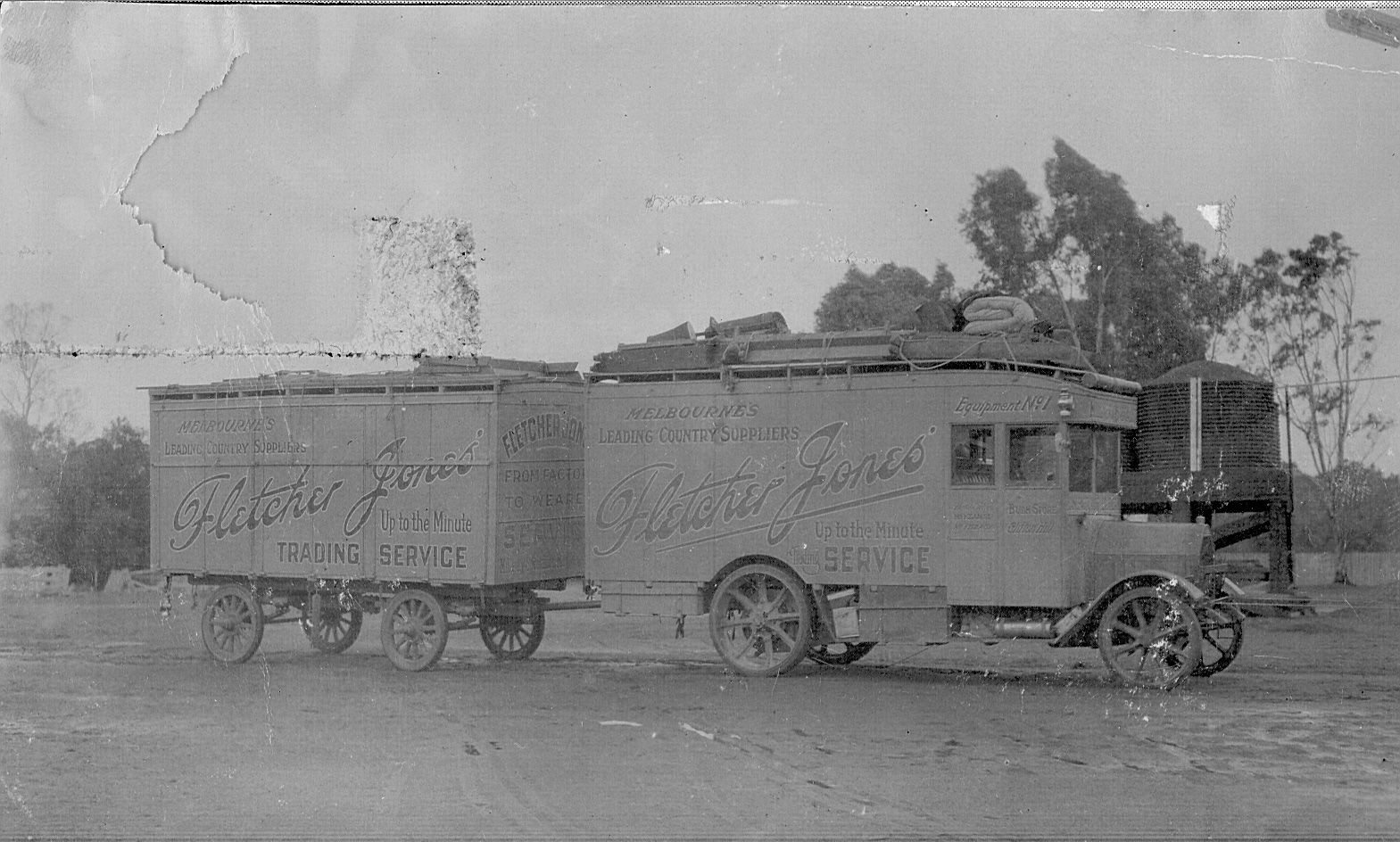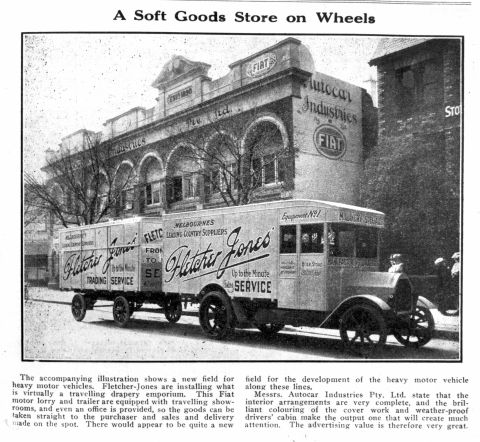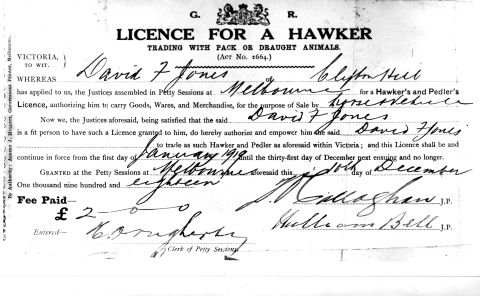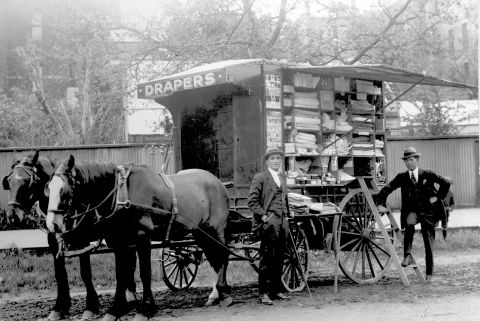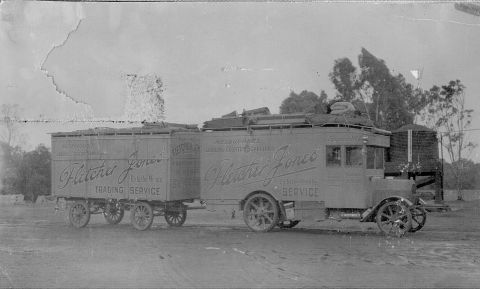Around 1918, Fletcher Jones tried his hand as a door-to-door salesman in Melbourne. Then he met up with his old army friend, Stan Clapton and they started up a hawker's business, known as Clapton and Jones. They borrowed money and bought a pair of horses to pull a wagon with stock of drapery, millinery, ironmongery and garden seeds. But Stan found the rough life on the road too hard and he pulled out before long. Fletcher continued to travel around the Western District of Victoria and the South East of South Australia, in various vehicles, selling at farms and in the towns till 1924.
"Once upon a time, many years ago, a young hawker was driving his wagon along a rough track in the Otway Ranges of Southern Victoria when he came across a clearing in the forest. In the clearing was a crude sawbench and nearby was an old stationary steam engine quietly blowing off steam.
Near the engine, a solitary man was sitting, mending the big drive belt, which supplied the power from the engine to the sawbench. The hawker and the man got into conversation. "You've broken your drive belt, I see" said the hawker. "Yes" said the man, "it's always breaking. The boss has gone off to buy a new one. It will break too. I know why, but the boss thinks he knows everything. He wouldn't dream of asking me for my opinion and I don't see why I should tell him. I'd just as soon be sitting mending belts as working hard sawing wood."
As the young hawker went on his lonely way he had plenty of time to think about this. Like most young soldiers in the First World War, he had tried to make life in the trenches a little more bearable by dreaming about the wonderful things he would do when the War was over. Before the War ended, he had been badly injured and discharged, classified by the army as totally and permanently incapacitated. Living the life of a hawker was probably an excellent way of restoring his health and strength but the young man was determined to go on to better and more useful pursuits.
As he drove along the track he made two resolutions - first that, if he ever got to have having any employees himself, he would make it clear to them that he valued their opinions; and second that he would make sure they they knew enough about his business to realise that there was not much future for anyone in preferring to mend belts rather than to saw wood."
As told by Neil Symons, Chairman Fletcher Jones and Staff Pty Ltd in a Policy Statement late 1970's
